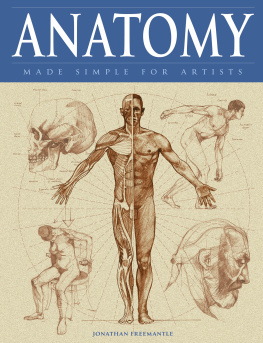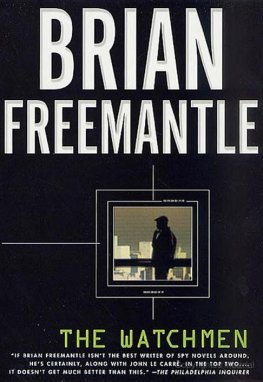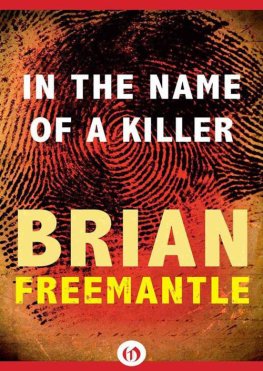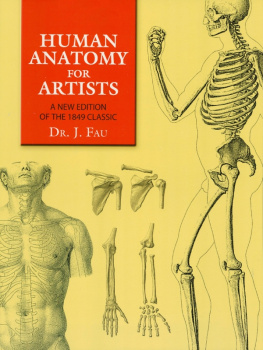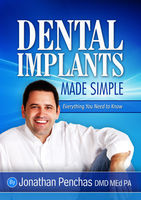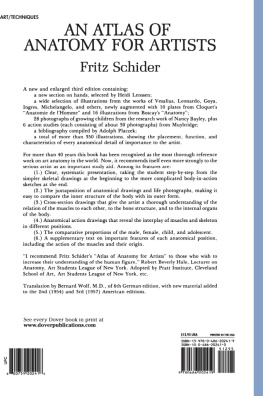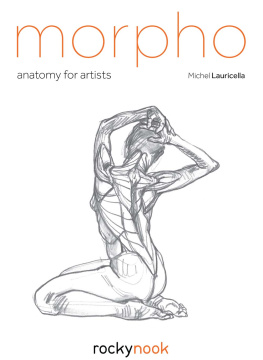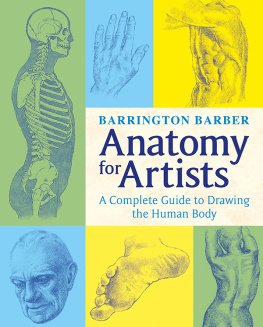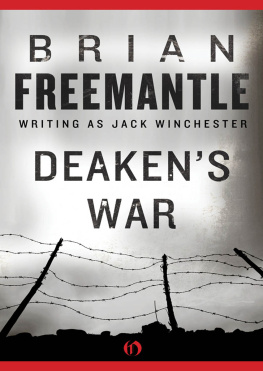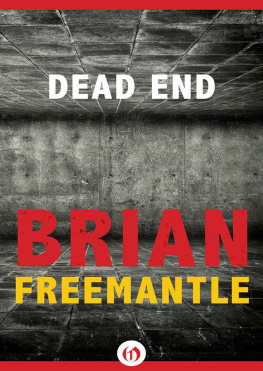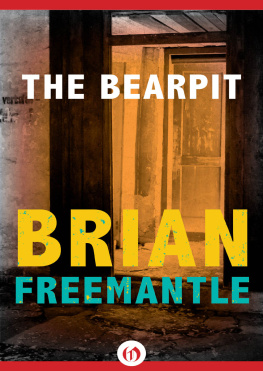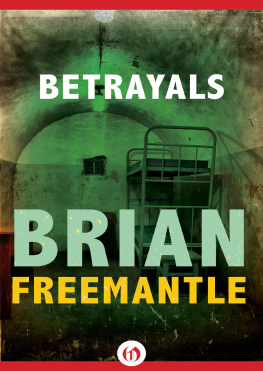Jonathan Freemantle - Anatomy Made Simple for Artists
Here you can read online Jonathan Freemantle - Anatomy Made Simple for Artists full text of the book (entire story) in english for free. Download pdf and epub, get meaning, cover and reviews about this ebook. publisher: Arcturus Digital Limited, genre: Children. Description of the work, (preface) as well as reviews are available. Best literature library LitArk.com created for fans of good reading and offers a wide selection of genres:
Romance novel
Science fiction
Adventure
Detective
Science
History
Home and family
Prose
Art
Politics
Computer
Non-fiction
Religion
Business
Children
Humor
Choose a favorite category and find really read worthwhile books. Enjoy immersion in the world of imagination, feel the emotions of the characters or learn something new for yourself, make an fascinating discovery.
- Book:Anatomy Made Simple for Artists
- Author:
- Publisher:Arcturus Digital Limited
- Genre:
- Rating:4 / 5
- Favourites:Add to favourites
- Your mark:
- 80
- 1
- 2
- 3
- 4
- 5
Anatomy Made Simple for Artists: summary, description and annotation
We offer to read an annotation, description, summary or preface (depends on what the author of the book "Anatomy Made Simple for Artists" wrote himself). If you haven't found the necessary information about the book — write in the comments, we will try to find it.
Anatomy Made Simple for Artists — read online for free the complete book (whole text) full work
Below is the text of the book, divided by pages. System saving the place of the last page read, allows you to conveniently read the book "Anatomy Made Simple for Artists" online for free, without having to search again every time where you left off. Put a bookmark, and you can go to the page where you finished reading at any time.
Font size:
Interval:
Bookmark:

This book is aimed at anyone who has developed an interest in the use of anatomy for artistic purposes and is looking for a simple, practical introduction into this vast subject. It is important to state that the use of anatomy in drawing, painting or sculpture should be seen strictly as a means to an end.
IT IS A TOOL, ALBEIT A POWERFUL ONE IF CORRECTLY USED, and should not be allowed to obstruct the creative process at all.
The best approach to the study of human anatomy is to use it as a means by which one may understand the movements of the body. The forms created by the movement of the bones, muscles and skin are completely different from when the body is stationary. It is useful to note that at no point in a human life is there no movement in the body; only when the body dies does this movement cease completely.
Because of this it is futile to merely study anatomy by looking at each bone and muscle in a static state; neither is it particularly important for the artist to commit to memory the names of the many muscles and bones in the body.
The artist takes from their enquiry into anatomy only that which serves to strengthen and deepen the power and expression of their art. Any other knowledge is not only superfluous but also potentially destructive.
Another important point to note before embarking on any study of anatomy is that muscles, bones and skin grow and evolve like anything else in life. They are the way they are strictly because of the function they perform. They will also cease to function if they are not used at all. We say: Im out of shape (unfit). We imply that there is a shape that we could be and due to a lack of exercise (of muscles etc.) have lost that physique. This is a natural process that occurs in every living form. Conversely, if a muscle is overstimulated through a certain repeated action (exercise) it will react by growing in shape and size.
I have attempted in this book to show that anatomy can be both practical and simple. I have taken life drawings and combined them with anatomical illustrations to shed light on what is going on beneath the surface. The best way to understand anatomy is by creating the need for knowledge. By this I mean that it is much more useful to draw from life, to look at the human body and when a question arises regarding one of the shapes or movements you see in front of you, make a note of it and investigate it anatomically later. This way your study will have purpose and meaning and you are likely to remember what you have learned for next time.
This is where the great difference between possessing information and having knowledge lies. The former is empty and has no focus while the latter comes from direct experience, has life and is personal.
Even the phrase to draw has two very distinct differences in meaning depending on its use. The first use is to describe merely the physical action of drawing (to draw a pencil across a page as an ox draws its plough across the field). The second use of the phrase is where the real work lies. This use implies drawing from within (to draw water from the well). This is how one should treat all drawing as a means by which we draw out not only what lies on the surface of our subject, but especially what lies within.
Leonardo da Vinci said:
A good painter has two chief objects to paint, man and the intentions of his soul; the former is easy, the latter hard, because he has to represent it by the attitudes and movements of the limbs
If we are to truly understand anatomy we should also begin to question what it is that makes us move, what does that particular movement that I see before me really mean beyond the obvious movement by mechanical impulse and what does it say to me?
For the purposes of this book, it being just an introduction, I have stuck to dealing only with the muscles and bones that have a direct effect upon the surface of the body. For most artists this is all we need.
I would encourage anyone who felt driven to take his or her study further to do so. The journey is as much about understanding the workings of the body as it is about understanding ourselves. Nevertheless, when it comes to the moment of creation, whether it be working from life or imagination, we need to be able to cast off all we have learned, everything we have acquired and meet the task ahead with freshness, vigour and courage to leave behind what is known in favour of the unknown.

Until 1839 and the introduction of the camera, anatomical documentation was limited to the drawings and annotations of artists and men and women of medical science.
THERE HAS ALWAYS BEEN A CLOSE ASSOCIATION BETWEEN ARTISTS and medical science in terms of anatomy. The search for knowledge and understanding of the human body is the same, yet the emphasis is different.
The first accounts of dissections are of those performed by Erasistratus and Aerophilius of the Pholemaic Medical School of Alexandria in 2 BC. After this, evidence is scarce of any further investigation into the workings of the body. This could largely be due to the rise of Christianity and the Christian taboo warning against tampering with the body. During medieval times anyone tampering with the body, or even unduly concerned with the body (which was seen as the rightful property of God only), would end up with eternal hellfire and damnation.
It was only during Italian Renaissance that a marked move away from this attitude took place. In all areas, including as the study of anatomy, the Renaissance produced some startling achievements and advancements. The large shift in thought from the medieval age was in how the human was seen in relation to the divine. This humanist age chose to celebrate beauty of human vessel as a reflection of the perfection of the divine rather than seeing it as an insignificant and impure shell scantily housing the perfect immortal soul.
There are many accounts of Renaissance anatomical research, but none are better than Leonardo da Vincis (14531519) notebooks.
Leonardo da Vinci made extensive studies into the anatomy of the human body and was so ahead of his time that many of his findings are still referred to today as canons of anatomical research.
An equally important aspect of the study of anatomy is proportion. Canons of proportion have formed the framework for artists throughout history - the earliest recorded canons being Egyptian.
The Greeks too had a clearly formulated set of proportions to work by (7.5 heads = body). They believed that man being the measure of all things should be used as a proportional framework for the design of buildings.
Another great artist to investigate the proportions and mechanics of the human form was Albrecht Durer (1471-1528). Working around the same time as Leonardo da Vinci, his two volumes on human proportion go a significant way towards understanding the working of the human form.
The study of anatomy has moved on a great deal since the exciting times of the Renaissance, but the spirit of enquiry has always remained the same. With our now vast knowledge of the human body it would seem a futile study to pick up, yet there is always more to learn and so the ancient study of anatomy carries on.

Font size:
Interval:
Bookmark:
Similar books «Anatomy Made Simple for Artists»
Look at similar books to Anatomy Made Simple for Artists. We have selected literature similar in name and meaning in the hope of providing readers with more options to find new, interesting, not yet read works.
Discussion, reviews of the book Anatomy Made Simple for Artists and just readers' own opinions. Leave your comments, write what you think about the work, its meaning or the main characters. Specify what exactly you liked and what you didn't like, and why you think so.

